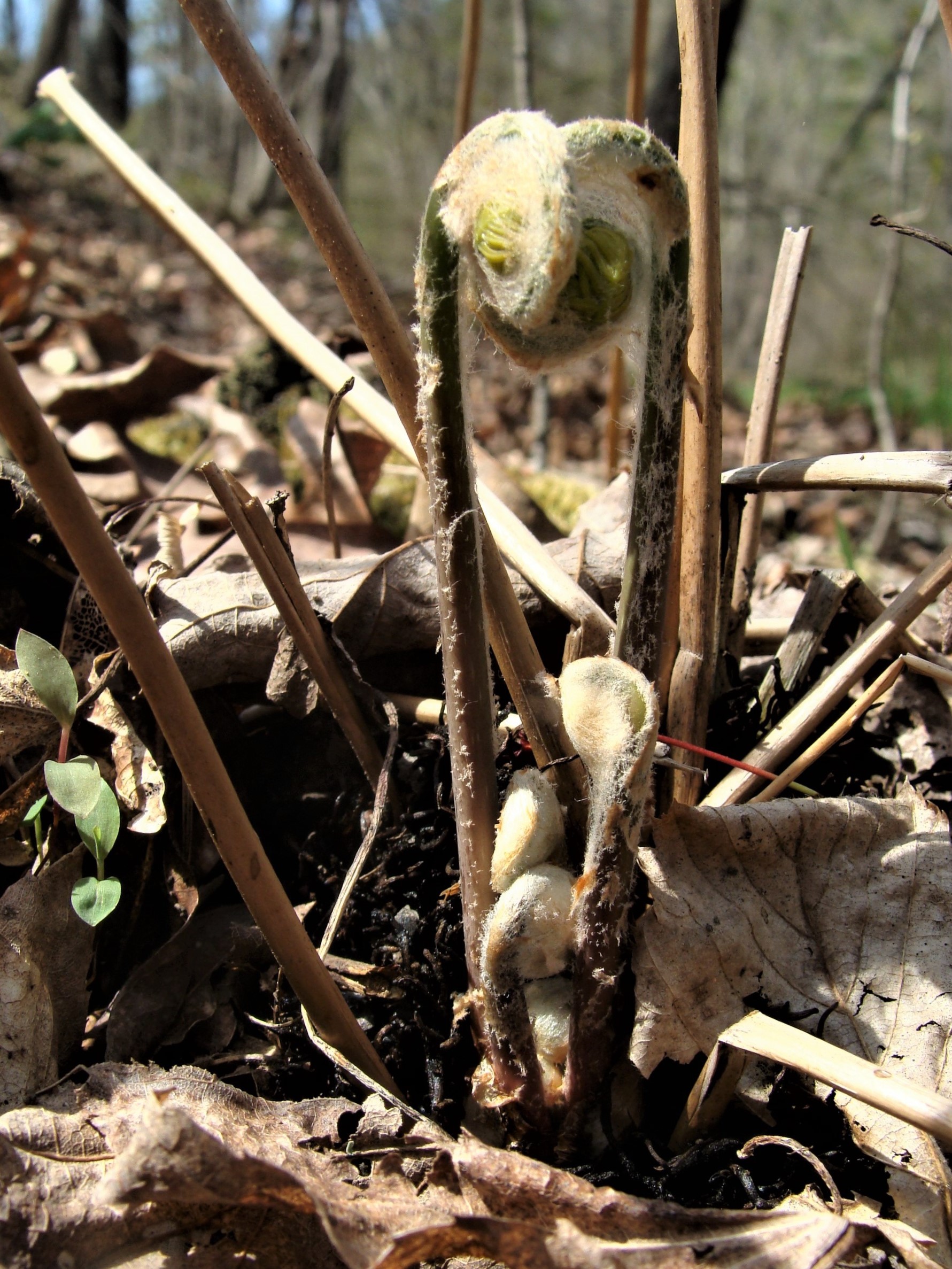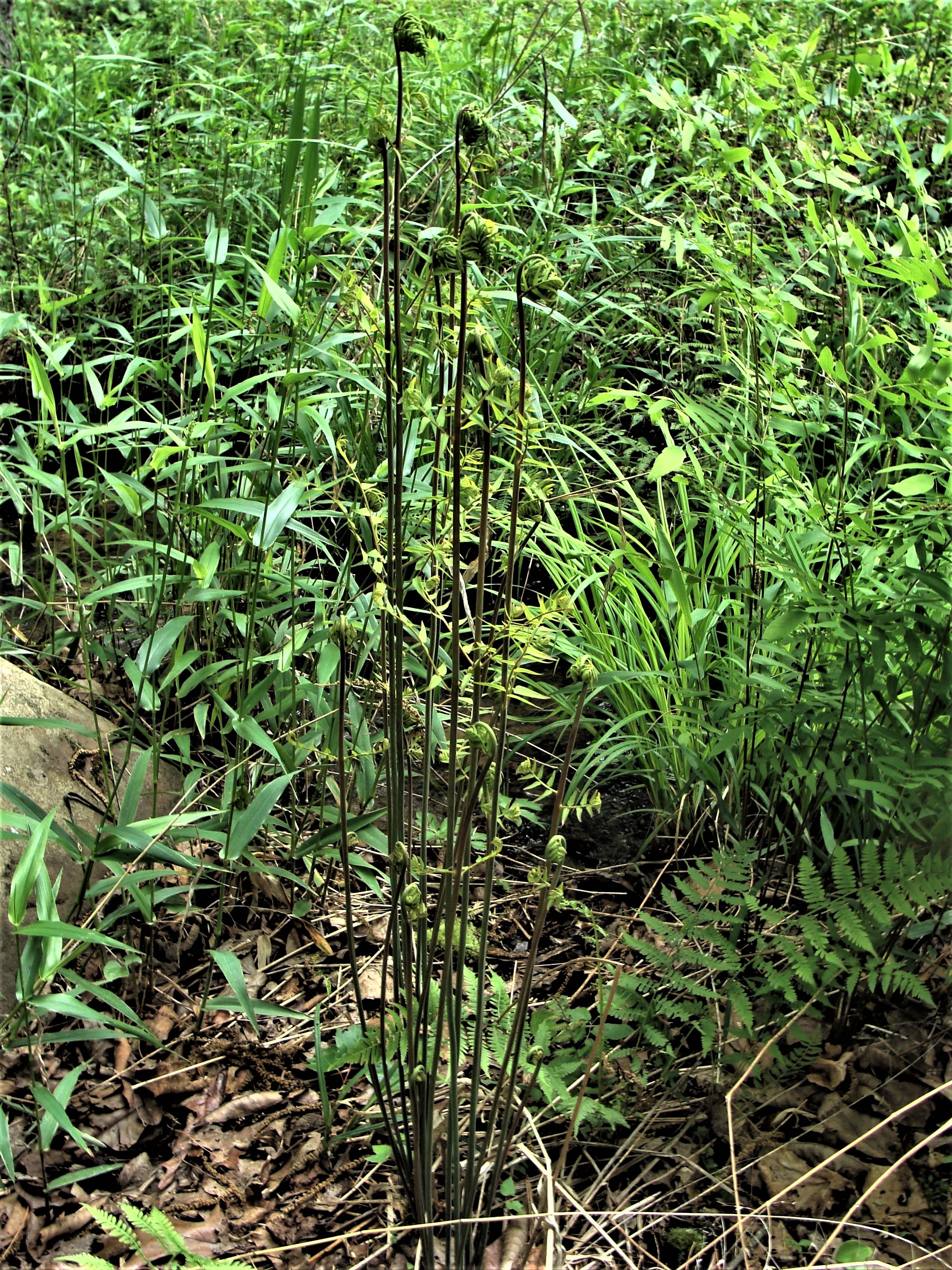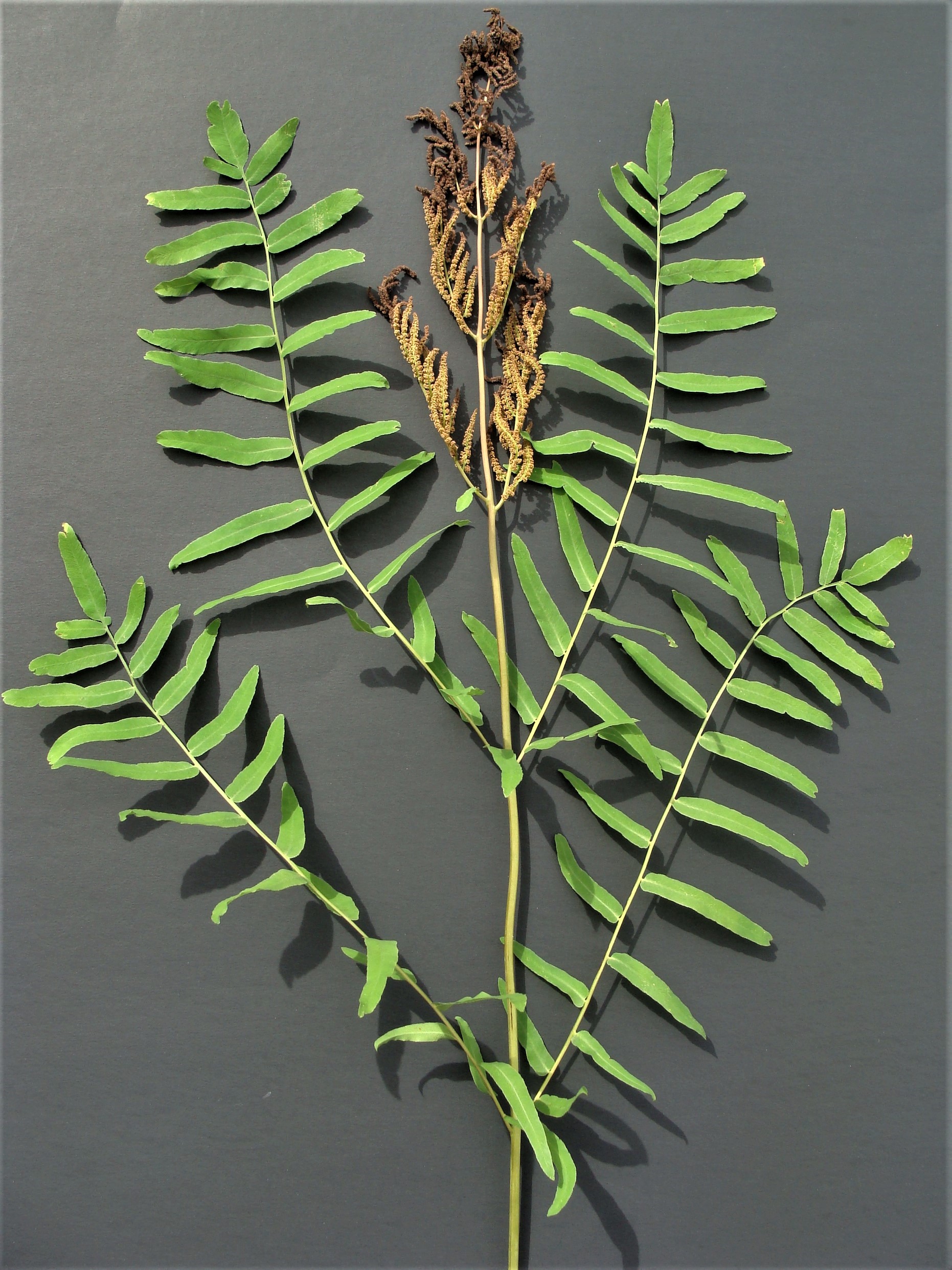Royal fern (Osmunda regalis var. spectabilis*) of the Royal Fern (Osmundaceae) family is a large herbaceous fern with a crown of clustered spore cases (sporangia) on the fertile fronds (leaves). In the U.S., it occurs from eastern Texas to Minnesota and thence to the Atlantic and Gulf Coasts. In Arkansas, it occurs pretty much statewide. The genus name, according to some writers, originates from “Osmunder,” a Saxon name for Thor, the god of thunder. The specific epithet is from the Latin for “regal” or “royal,” in reference to the fern’s size and majestic appearance. The variety name is from Latin for “admirable” and “spectacular”. It is also known as regal fern and American royal fern (this being the only variety in North America). Habitat preference is partly to mostly sunny areas with consistently wet to occasionally flooded soils, such as shallow, slow-moving drainages, bogs, marshes, seeps, moist bluffs, and open wetlands.
Royal fern has a stout, elongate rootstock that may be oriented vertically (in less-wet habitats) or horizontally (in wetter habitats). Dense, black, wiry and tough fibrous roots completely shroud the rootstock. New fronds (leaves) emerge at rootstock’s apex, surrounded by stubs of previous years’ leaves. Apices of vertically positioned rootstocks may become elevated above duff level while apices of horizontally oriented rootstocks remain at duff level, in rhizome-like fashion.

In early spring, new fronds appear as large fiddleheads which unfurl into smaller fiddleheads that unfurl into pinnae (leaflets). The large fiddleheads are initially covered with long, matted pubescence which drops off as the stipe (leaf stalk) and rachis (midrib) elongate. Unfurled leaves are bipinnate or twice-cut into pinnae (leaflets) and pinnules (secondary leaflets). Depending on the habitat and season, fronds may be erect, ascending or arching. Fronds gradually decline in the fall and, except for frond stubs, disappear over winter.


Fronds are typically 2 to 4 feet long (maximum about 6 feet) and about half as wide, with widely spaced, opposite pinnae that elongate to 12 inches. Fronds are sterile or fertile, both having the same vegetative structure. However the upper pinnae and pinnules of fertile fronds lack chlorophyll and are modified into clusters of spore-producing sporangia. Below the sporangia, fertile fronds have the same appearance as sterile fronds.

Pinnae of both sterile and fertile fronds bear six to twelve pinnules to 2 inches long and ⅜ inch wide. Pinnules are alternate to offset-opposite, mostly oblong, with rounded apexes and rounded to truncate-oblique bases. Margins are slightly undulating and minutely serrate. Fertile pinnae are greatly reduced in size. Spherical sporangia, maturing from frond apex downward, occur in small, naked, short-stalked clusters. Initially dark green, due to the chlorophyll-bearing spores within, sporangia turn lighter green to golden brown as they mature and then split in half across the top to release the spores. Sporangia then wither, and in late spring, the entire upper spore-bearing portion of the fertile fronds quickly shrivels. The lower portion of fertile fronds remains green and photosynthetic.


With spores dispersed, the reproductive activity of the “sporophyte phase” of the fern’s life cycle concludes. In the soil, spores germinate to produce a prothallus, the “gametophyte phase.” The tiny, ephemeral prothallus produces not spores but gametes, sperm and egg. Mobile sperm swim through ground moisture to fertilize eggs that have remained attached to their prothallus. Fertilization then produces a zygote that in turn develops into a large, perennial sporophyte plant. Readers who have taken a general botany course may remember this complex, elaborate life cycle being described as an “alternation of generations.”
Royal fern would be an excellent choice for mesic (in shade) to hydric (in sun) areas of a native plant or fern garden. Like most temperate zone ferns, it is herbaceous, dying to the ground each winter. But from spring to fall, with its large, bold structure, yet elegant and graceful fronds, it is a striking addition to the garden, either as a single plant or as a colony.

In addition to royal fern, two other members of the Osmundaceae family occur in Arkansas: interrupted fern (Osmunda claytoniana) and cinnamon fern (Osmundastrum cinnamomeum). While royal fern has bipinnate leaves (pinnae fully divided into pinnules), the other two ferns have pinnate-pinnatifid leaves (pinnae deeply lobed but not fully divided). Also, sporangia of interrupted fern, unlike those of royal fern, are located on fertile pinnae below the apex of fertile fronds (about mid-frond, with sterile pinnae above and below). Cinnamon fern has entirely separate fertile fronds that bear sporangia only.
*Recent genetic studies suggest that the royal fern of North America is a separate species (Osmunda spectabilis), but this reclassification has not been fully accepted by the botanical community.
Article and photographs by ANPS member Sid Vogelpohl

